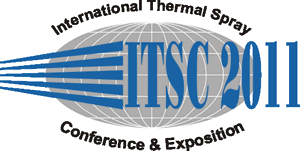
|
2918 |
|
Wednesday, September 28, 2011, Saal C2.1 4:00 PM Medical Industry 1 |
|
Detonation spraying of TiO2-Ag: evolution of phase composition and microstructure of the coatings |
|
Dina Dudina* / Lavrentyev Institute of Hydrodynamics SB RAS, Russia Sergey B. Zlobin/ Lavrentiev Institute of Hydrodynamics SB RAS, Russia Alexey L. Bychkov/ Institute of Solid State Chemistry and Mechanochemistry SB RAS, Russia Natalia V. Bulina/ Institute of Solid State Chemistry and Mechanochemistry SB RAS, Russia Vladimir Yu. Ulianitsky/ Lavrentiev Institute of Hydrodynamics SB RAS, Russia Oleg I. Lomovsky/ Institute of Solid State Chemistry and Mechanochemistry SB RAS, Russia |
|
TiO2-Ag system is well known for its photocatalytic and antibacterial properties. In many applications, working surfaces should inhibit bacterial growth, so it is important to form TiO2-Ag thin layers. Detonation spraying is an attractive method to produce titanium dioxide coatings of good adhesion to metallic substrates. In the present work, TiO2-Ag coatings were deposited on copper substrates using a detonation gun. Rutile TiO2 and metallic Ag powders were mechanically milled to produce composite powders that were further agglomerated using a polyvinyl alcohol water solution as a binder. During detonation spraying, the initial phase composition of the sprayed powder can be altered leading to changes in the performance of the deposited layer. Different modes of detonation spraying were employed varying in the composition of the explosive mixture and its amount (explosive charge). The possibility of using different fuel (acetylene) to oxygen ratios offers potential to control chemical reactions of reduction/oxidation in the deposited material. The particle temperatures and velocities were calculated using a previously developed model. The coatings deposited under a reducing atmosphere contained the Ti3O5 phase along with the remaining rutile, the relative amount of the Ti3O5 phase increasing with the temperature of the sprayed particles. Under an oxidizing atmosphere, the main phase in the coatings was rutile. When melting of titanium dioxide was avoided, porous coatings formed. With increasing temperature, a larger fraction of the coating surface possessed a re-solidified structure. Although silver particles experienced melting, they were well preserved in the coatings. The variation of the detonation spraying parameters opens up possibilities of controlling the phase composition, microstructure, density and surface roughness of the TiO2-Ag coatings. |